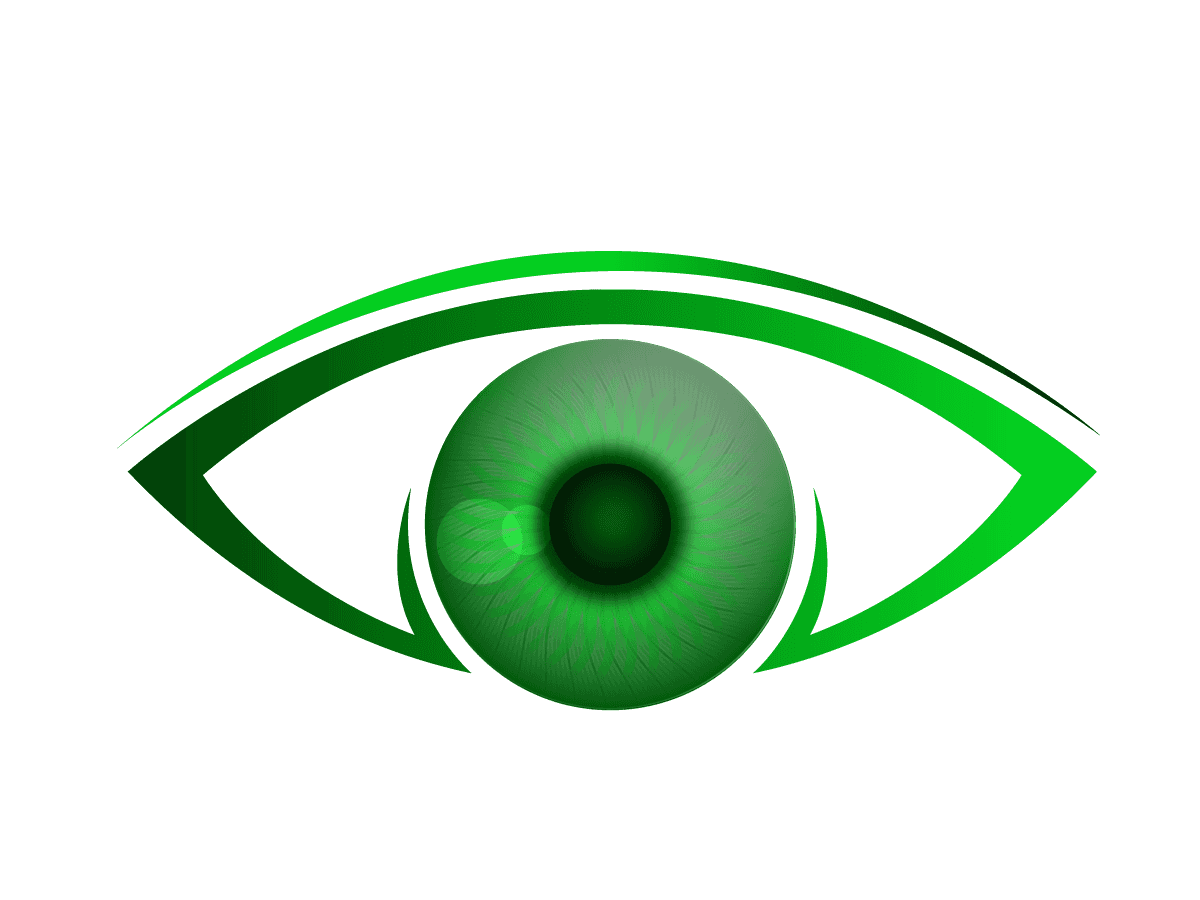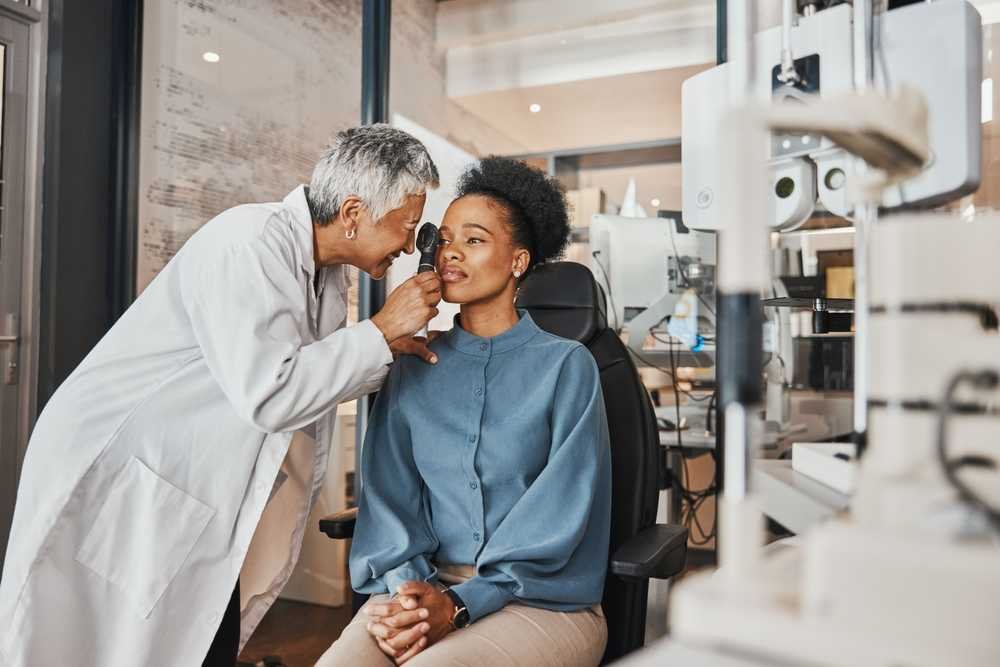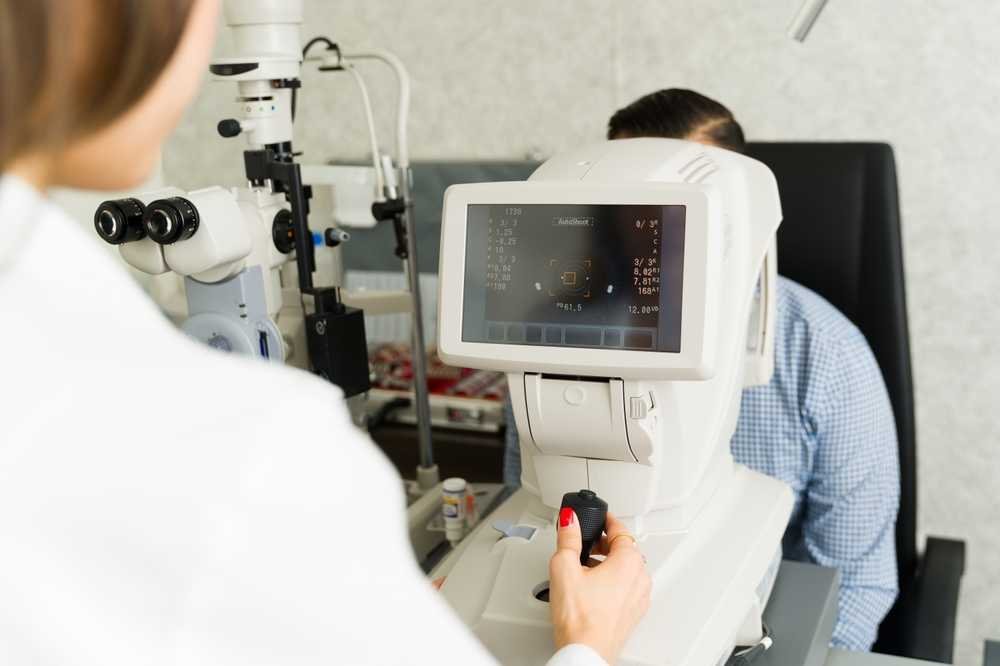Table of Contents
Vision is one of the most crucial human senses, impacting nearly every aspect of our daily lives.
Regular eye screenings are important for maintaining eye health and catching problems early. Attending screenings regularly is crucial. Technology has improved, making vision test machines familiar for early detection and prevention of eye diseases.
This article explains why regular vision screening is essential. It also describes the different types of vision testing machines. Finally, it offers tips on including these devices in your routine to maintain good eye health.
Understanding Vision Screening
What is Vision Screening?
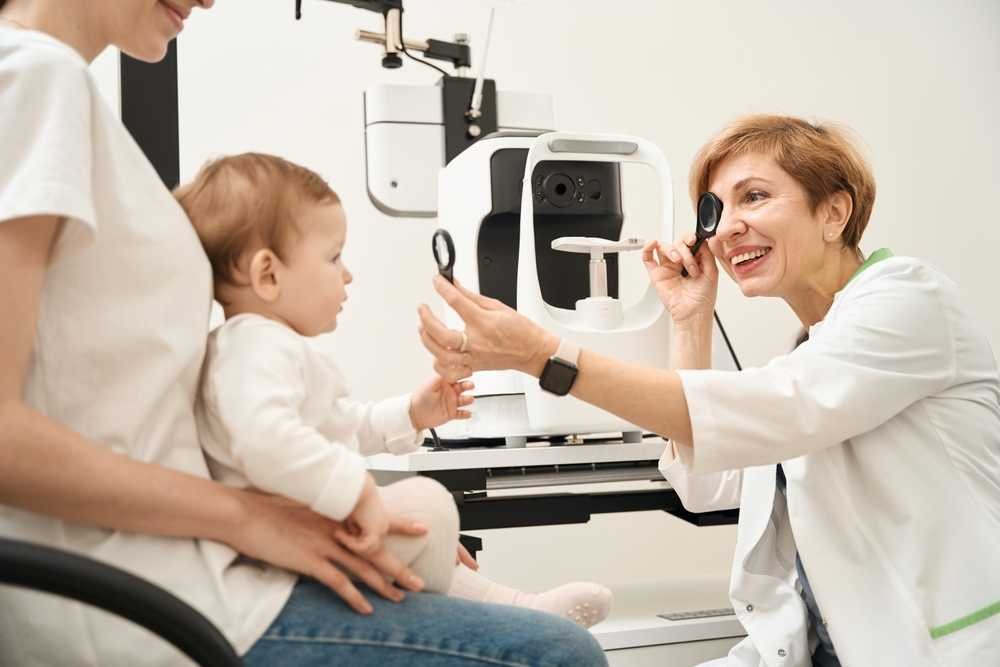
Vision screening is a precautionary process used to identify problems with your eye health or eye disorders.
A trained nurse, optometrist, or other health care provider usually conducts this screening. People perform these tests in settings like schools, health centers, or workplaces. Doctors use special machines to check for eye problems like blurry vision and double vision before they worsen.
Vision screeners do not diagnose specific conditions. They use them to identify potential problems. An eye doctor may need to look at these problems further.
After getting your vision checked, it’s essential to have a complete eye exam to understand your eye health fully.
Four types of issues that these health care professionals are checking for in the process include:
- Visual Acuity – this is the most common part of vision testing. It tests how well someone can see far away, often with a chart showing letters or symbols of various sizes.
- Eye movement and alignment – check for problems with the eyes. They look for issues like misaligned eyes, known as strabismus. They also assess the eye muscles and how they move. Simple cover tests can detect issues where one eye turns in, out, up, or down.
- Depth perception – measures how well a person can judge the distance of objects they see in their surroundings. This is important for actions such as driving or playing sports.
- Refractive Errors – Healthcare professionals use different tools like autorefractors or retinoscopes to estimate refractive errors such as myopia (nearsightedness), hyperopia (farsightedness), and astigmatism.
Early signs of serious issues can vary by person. For babies under 1 year old, symptoms may include being unable to follow an object when tested. Also the presence of misalignment of the eyes.
For older kids, it could be:
- Squinting or frowning
- Closing or covering of one eye
- Trouble reading or doing work that is closer in proximity to the eyes
- Complaining of blurriness
- Blinking excessively
- And/or red, swollen, watery, or crusted eyes
Your doctor can find early signs of eye diseases by checking for certain issues, which may require further examination.
Additional Vision Problems Detected by Screening
Vision screenings are essential in detecting a wide range of early vision problems. Doctors can catch and treat conditions like amblyopia (lazy eye) when they identify them early. Amblyopia, if left untreated, can lead to permanent vision loss. Screenings can also identify strabismus (misalignment of the eyes), which can affect depth perception and coordination if not corrected.
Examples of Screening Programs
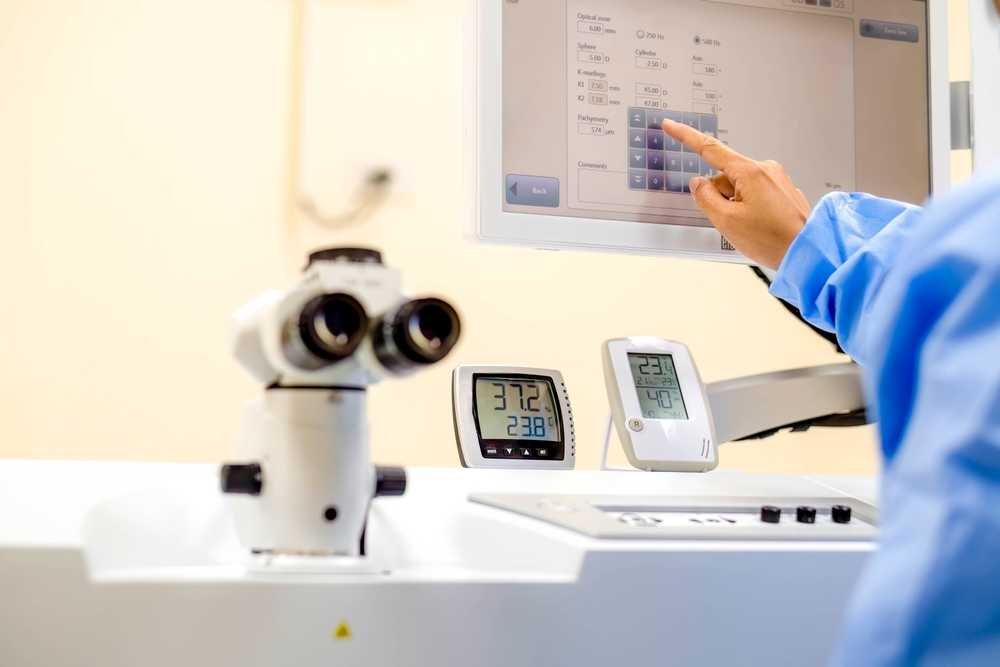
Vision screening programs have been implemented successfully in many different settings.
The “Vision for Baltimore” program in the US gives free eye exams and glasses to students who need them. This initiative has significantly improved academic performance and attendance rates, demonstrating the far-reaching benefits of regular vision screenings.
Vision screening may not catch all eye disorders. Follow up with your doctor and get regular eye exams to ensure your eyes are healthy.
The Importance of Vision Screening
Early vision screening is vital for finding eye diseases early. This can help prevent serious vision loss. The National Center for Children’s Vision and Eye Health supports this.
Regularly screening is essential for preventing health issues. It helps you feel better and enjoy life more. It also ensures that any problems don’t interfere with your daily activities.
Children need to be screened regularly.
It is also more cost-effective than a comprehensive eye exam. It helps find people with eye diseases and prevents vision loss quickly and effectively.
The World Health Organization says over 2.2 billion people have a disability or are blind. About 1 billion of these cases could prevent or still need attention for vision problems.
Half of the blind or visually impaired people could have kept their sight if they had taken steps to get regular eye screenings.
Regular eye exams can find issues like nearsightedness, farsightedness, astigmatism, glaucoma, and diabetic eye disease. This shows how important it is to have your eyes checked regularly.
Types of Vision Test Machines
1. Vision Screener Welch Allyn VS100 ($1,550.00)
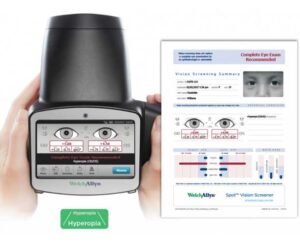
The Welch Allyn VS100 Spot Vision Screener is a portable device. It quickly checks for vision problems. These problems include nearsightedness, farsightedness, astigmatism, and eye alignment issues. It works well for testing young kids and people with delays because they don’t need to talk to do it.
The VS100 provides immediate results, making it a valuable tool for pediatricians, schools, and community health programs.
A large-scale study involving the Welch Allyn Spot Screener proved to be a highly effective tool in screening children. This study shows that the Spot Vision Screener can detect 97% of children with vision issues, with a sensitivity rate of 97%.
On the other hand, the device itself has a specificity rate of 87%. This means that it can correctly identify 87% of children with no issues with their vision.
2. Plusoptix Vision Screener
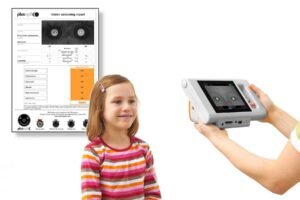
Plusoptix vision screeners are designed to detect vision disorders early, particularly in children. They include binocular refraction measurement, pupil size, and gaze asymmetry assessment, all within seconds.
The devices make it easy to carry, simple to use, and usable in clinics, schools, and health centers. The screeners help identify conditions such as amblyopia, myopia, hyperopia, and astigmatism, facilitating timely referrals to eye care specialists.
The Plusoptix Vision Screening product line includes several key devices designed for early detection of vision disorders:
- Plusoptix S12C Mobile Vision Screener: A portable device for quick and accurate vision screening in young children
- Plusoptix S12R: a vision screener that helps find vision problems in young children, even those as young as six months old.
- Plusoptix S16 Vision Screener: A more advanced model with enhanced features for comprehensive screening in various settings.
- plusoptiX S20 Mobile Vision Screener: Ideal for clinics, schools, and community health programs, this portable screener delivers rapid diagnostics and user-friendly operation for superior eye care.
Designers created these products for pediatricians, school nurses, and health workers to help identify and treat vision problems early.
The Plusoptix series includes vision screening machines such as the Plusoptix S12 Mobile Screener, S12R, S16, and S12C models. It also features the A16 Stationary Binocular Autorefractor. These models provide accurate and precise measurements, making them suitable for kids and adults.
Take the Plusoptix S12R Vision Screener, for example. It has advanced technology that detects refractive errors and other abnormalities with precision.
Titmus Vision Screener

The Titmus Vision Screener is a comprehensive device for testing various aspects of visual function.
Key features include:
- Multiple Vision Tests: Assess visual acuity, color vision, depth perception, and peripheral vision.
- User-friendly and portable design, ideal for schools, health settings, and vision screening programs.
- Accurate and Reliable: Provides consistent, reliable results for diagnosing vision issues.
- Customizable Testing: Users can tailor it for different age groups and testing needs.
Many people use this screener for both clinical and occupational vision screening. The Titmus vision screeners are popular models. This includes the V4, V2, Kaleidos, and 2WIN. They have a reputation for their versatility and thorough screening features. The Titmus V4 Screener is strong and offers many tests, making it useful for vision screening programs.
Benefits of Using Vision Test Machines
Accuracy and Efficiency
These machines provide accurate and time-saving results, significantly reducing the time it takes for initial assessments. These devices use advanced technology to provide precise measurements, giving you results you can trust.
Studies from the Journal of Pediatric Ophthalmology and Strabismus show that these tests make diagnosis faster and more accurate. This leads to quicker solutions for patients and better outcomes.
Cost-effectiveness
Vision testing machines are also a more affordable way to check for any eye and vision abnormalities. They reduce the need for expensive, time-consuming comprehensive eye exams for everyone involved. This helps to weed out those that may need further inspection.
A study in Health Economics found that using automated devices for school vision screenings saves a lot of money. This is in comparison to traditional eye exams. All while increasing the probability of detection of any problems.
Early Detection and Prevention
One of the most important benefits of these machines lies in their ability to detect eye diseases early.
Detecting conditions like glaucoma and diabetic retinopathy early allows for taking timely treatment and corrective measures. Catching these diseases early helps protect your eyes from their harmful effects.
Take, for example, Cataracts. This disease can cause side effects such as seeing a hazy fog or being extremely light-sensitive.
Each vision screener machine is designed to streamline the process.
Adults over 40 should undergo annual screening for eye problems. This is especially important for those with a family history of glaucoma. Regular check-ups can help detect any issues early.
This can include high blood pressure, risk of stroke, or the presence of cataracts. This is the leading cause of vision loss for adults over the age of 40.
Improving Quality of Life
The CDC says that vision problems can make people more likely to feel depressed and anxious, affecting their mental health.
Regular vision screenings can improve quality of life by ensuring the best vision care possible. Training staff on how to use these machines and follow procedures can improve the effectiveness of your screening program.
The best practices include making sure that the machines are calibrated to ensure your results stay correct and maintaining.
Early detection of vision problems helps kids get glasses or treatment, preventing issues that could impact their grades.
Best Practices for Vision Screening
Incorporating Vision Screener Machines
Healthcare providers should integrate vision screener machines into their practice to offer comprehensive care. Training staff on proper usage and conducting regular screenings can improve the overall effectiveness of the process.
Be sure also to maintain these devices and calibrate so that you are sure to get accurate results.
For instance, a clinic could start a vision screening program with the Plusoptix S16 Vision Screener. The staff would need training on how to use the machine and keep it well-maintained. This is important to make sure the machine works properly.
Frequency of Screenings
The frequency of these screenings should be determined by the individual participating. Take into account factors such as existing conditions, family history, and age of the patient.
Adults should have their vision checked every two years. Children should check their vision more frequently because they are more likely to have vision issues. Screen them once between the ages of 3 and 5 years. After that, teachers should regularly test them throughout their school years.
Follow-ups and Comprehensive Eye Exams
Vision screenings should not replace comprehensive eye exams.
Following up on the results is crucial, with the doctor evaluating you thoroughly. These thorough eye exams check your eye health in detail and can find conditions that vision screeners may miss.
If a vision screener finds a problem like high eye pressure, the person should see an eye doctor for a full exam. During this comprehensive eye exam, an ophthalmologist or optometrist can perform more in-depth tests,
such as visual field testing and optical coherence tomography, to confirm the diagnosis and determine the appropriate treatment.
Conclusion.
Using vision test machines regularly, along with eye exams, will help keep your eyes healthy. Advanced vision testing machines help healthcare providers accurately detect eye conditions early. Combined with thorough eye exams, these tests can enhance your quality of life and maintain your eye health.
Put your eyes at the top of your list of priorities.

Matthew Strachovsky, M.D.
Dr. Strachovsky's undergraduate training began in Boston, Massachusetts at Boston University and was completed at Stony Brook University in Long Island, NY. There he graduated Summa Cum Laude, obtaining a Bachelor of Science degree in Biology with special recognition for academic achievement.
He continued his education at Stony Brook School of Medicine and graduated with the additional designation of the "MD with Recognition" program. He worked as an intern in Internal Medicine at Winthrop University Hospital in NY and pursued a residency at Stony Brook University Hospital in Ophthalmology acting as Chief Resident in his final year. He completed his fellowship training in Vitreoretinal disease with a major emphasis on the diagnosis and management of retinal vascular diseases under the direction of Dr. Michael O'Brien at Koch Eye Associates in Rhode Island.
Dr. Strachovsky has presented research at the annual Association for Vision and Research in Ophthalmology meeting and published articles in journals including, Investigative Ophthalmology and Visual Science and The Journal of Neuro-ophthalmology.
Dr. Strachovsky's professional interests include the management of Age-Related Macular Degeneration and diabetic eye disease. He is Board Certified in Ophthalmology and a member of the American Academy of Ophthalmology, American Society of Retina Specialists, Young Ophthalmologist Network, and Leading Physicians of the World.
" I believe that the physician/patient relationship is more important than ever. Being an Ophthalmologist allows me to help patients and build a foundation of trust, knowledge, and professionalism when it comes to eye care".
